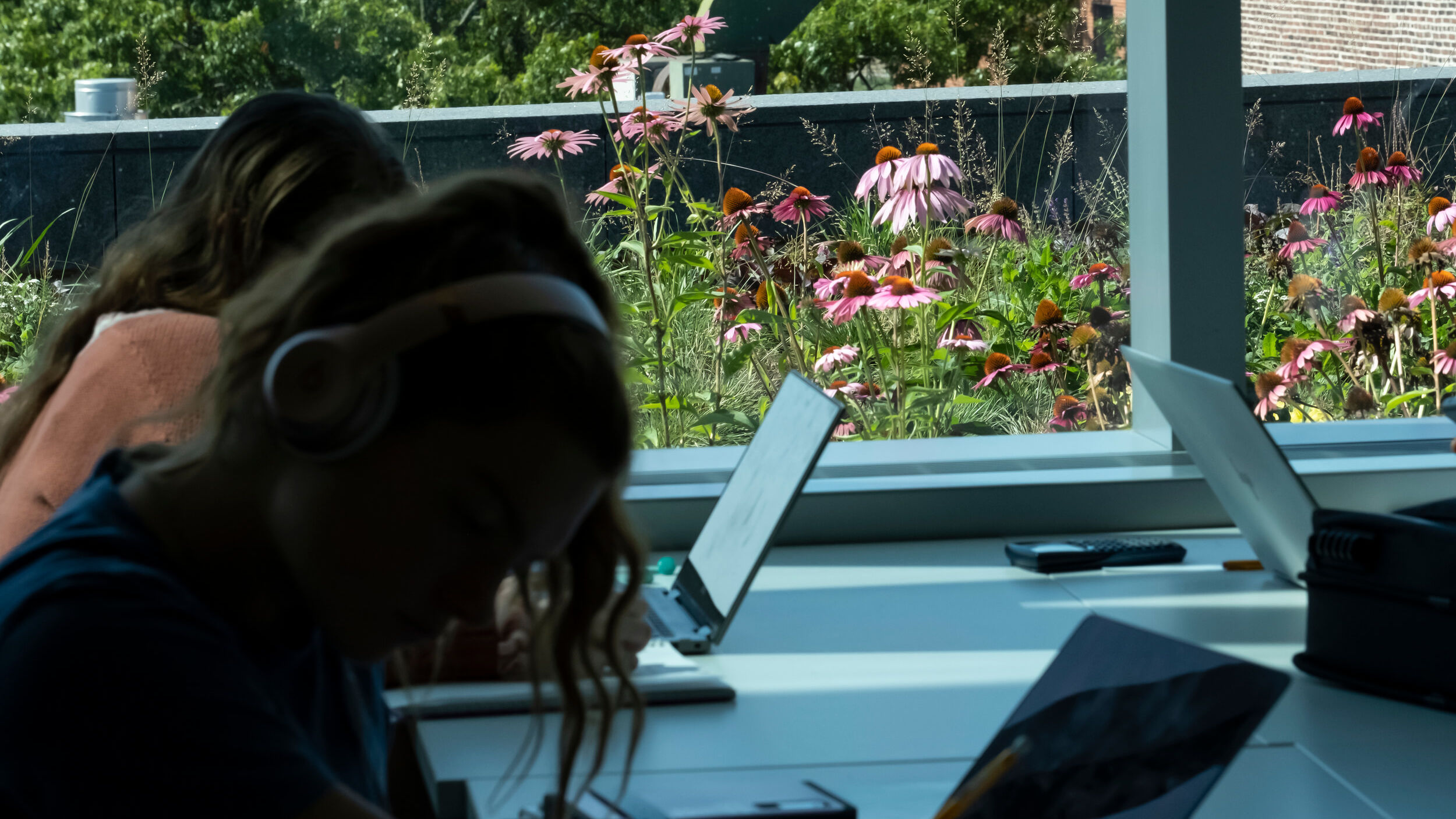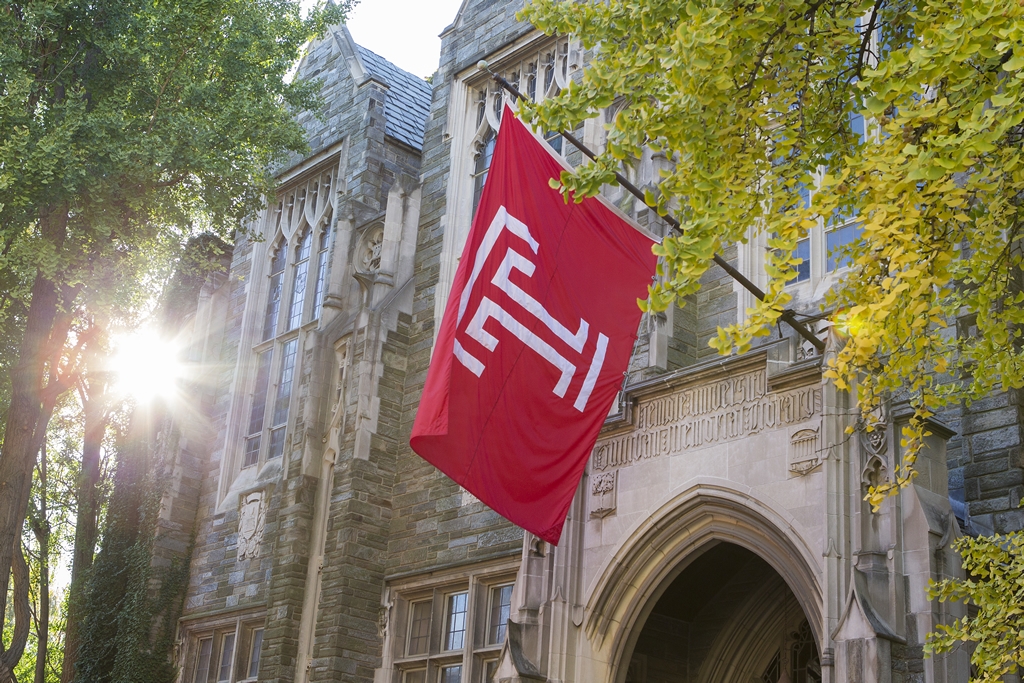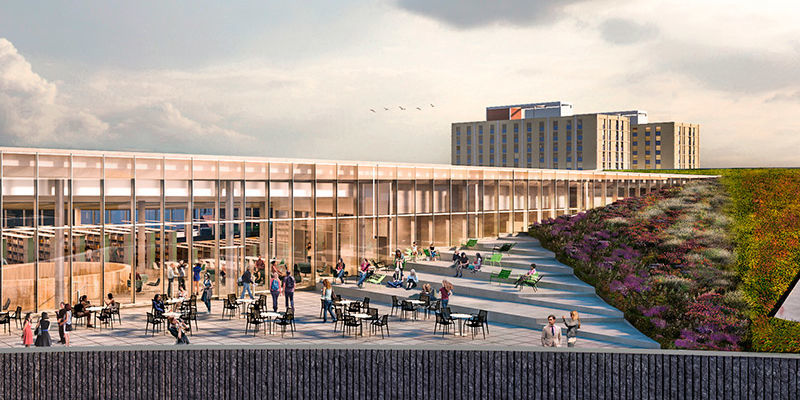On Charles Library’s green roof, sustainability starts from the top down
The rooftop garden showcases Temple’s commitment to sustainable development.

When Charles Library opened in September 2019, so did its green roof, one of the largest in Pennsylvania. A crucial part of the library’s stormwater management system and one of its most visible sustainable features, the roof is now celebrating its first spring.
Transforming a standard roof into a green one begins with a waterproof membrane and a layer of soil, or rather, media. “We call it media because it doesn’t actually contain any natural soil,” said Glenn Eck, associate director of grounds at Temple. Soilless mixes contain anything from composted bark and coconut coir to peat moss and are not only lightweight, but also drain well.
Drainage is essential. “The main reason we have the green roofs here at Temple is because the media can absorb and temporarily hold some of the rainwater when you have a rainstorm,” Eck said.
As in many U.S. cities, parts of Philadelphia are served by a combined sewer system: stormwater and sewage flow down the same pipes. When it rains, water sheets off roofs and pavements and into the sewers, combining with sewage to create a heavy flow of wastewater. Sometimes there’s too much for the system to handle.
A green roof helps lessen the burden. “It slows down the rate at which the water runs down into the Philadelphia stormwater system,” Eck said.
Charles Library’s roof combines elements of both intensive and extensive green roofs, which means the depth of the media varies between sections. “The portions of the roof garden that you can see when you’re on the top floor are an intensive green roof,” Eck said. The plants there are “planted in a greater depth of soil than the plants on the very top of the library.”
Above the intensive level is the extensive one, only visible from outside the building and home to a range of succulents. “They can grow successfully during dry periods in just a few inches of media,” Eck said. And when it rains, “they’re able to make use of the water that’s held by the media.”
While the range of plants on the extensive level is limited, the deeper soil in the intensive section allows for greater variety. Herbaceous perennials like garden sage grow alongside flowering plants like purple coneflower. “It’s more aesthetically interesting for the humans that can see the space,” Eck said. “But the other thing, too, is that it allows you to plant some plants that are more useful to birds and bees.”
The green roof is designed to have a succession of blooms, with a series of plants flowering from spring to fall. For example Sedum “Autumn Joy,” a perennial with succulent leaves, blooms in early fall. “The idea being that [the roof] would be an area that the pollinators could return to again and again and again throughout the season and always find something up there they could take advantage of,” Eck said.
Charles Library’s green roof isn’t Temple’s first. The roofs of the Architecture Building and the Intercollegiate Athletics Field House at Ambler Campus came before it. But Charles’ roof is the university’s largest and makes the Main Campus literally and figuratively greener, at a time when sustainability has never been more important.
“Every time we build another housing development or another shopping mall, or encroach on forest or a meadow, we’re reducing our native flora,” Eck said. Ecological benefits are just as important as aesthetic ones and the more we consider using native plants or those best adapted to a particular environment, the better, he said.
“It’s really been a change in the thought process where aesthetics are not the only thing driving the decisions that we make.”
—Edirin Oputu


